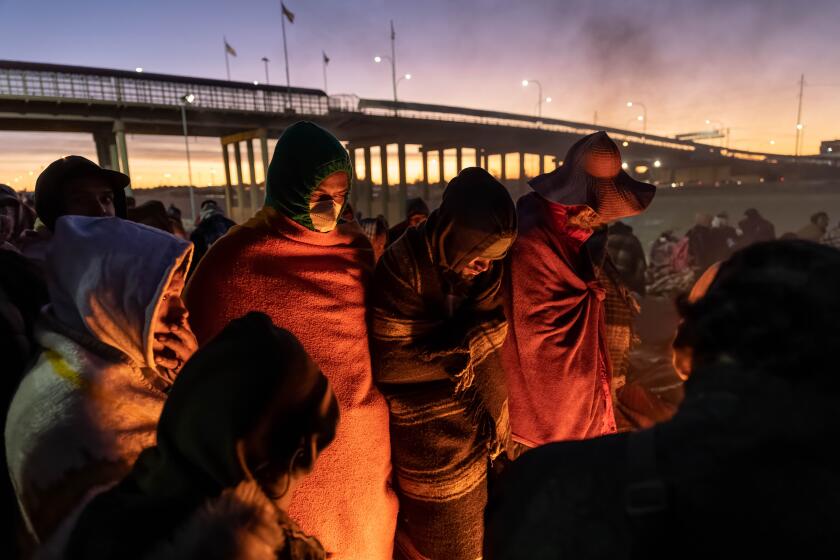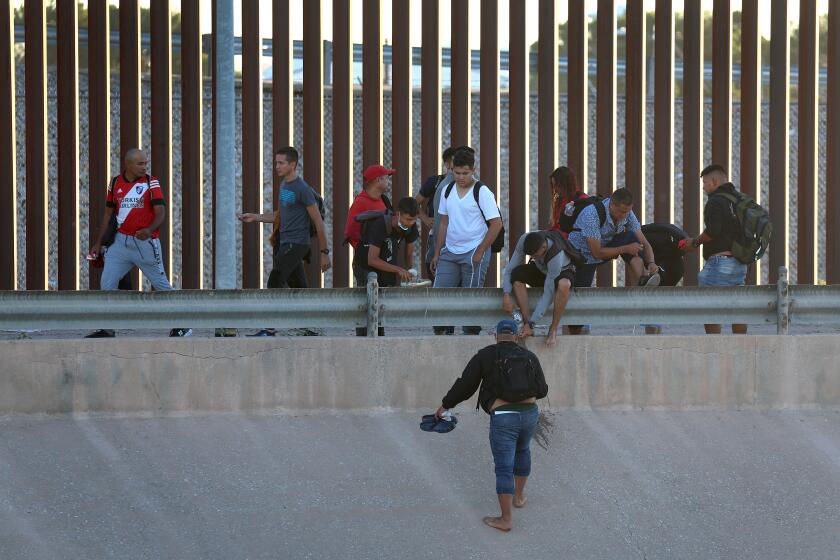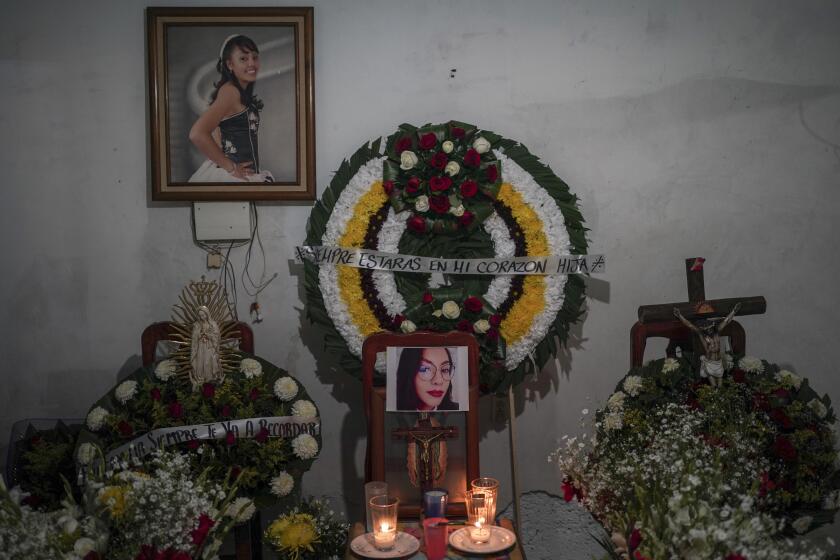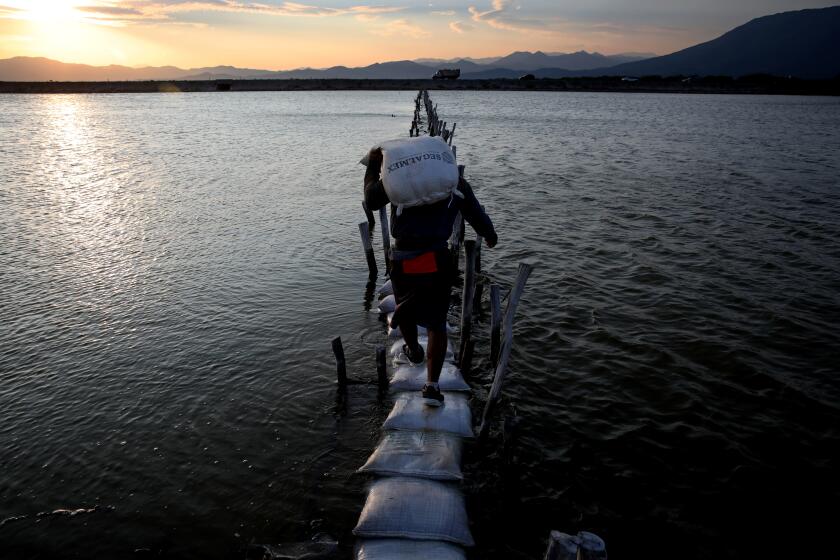Mexico draws more asylum seekers despite grisly violence
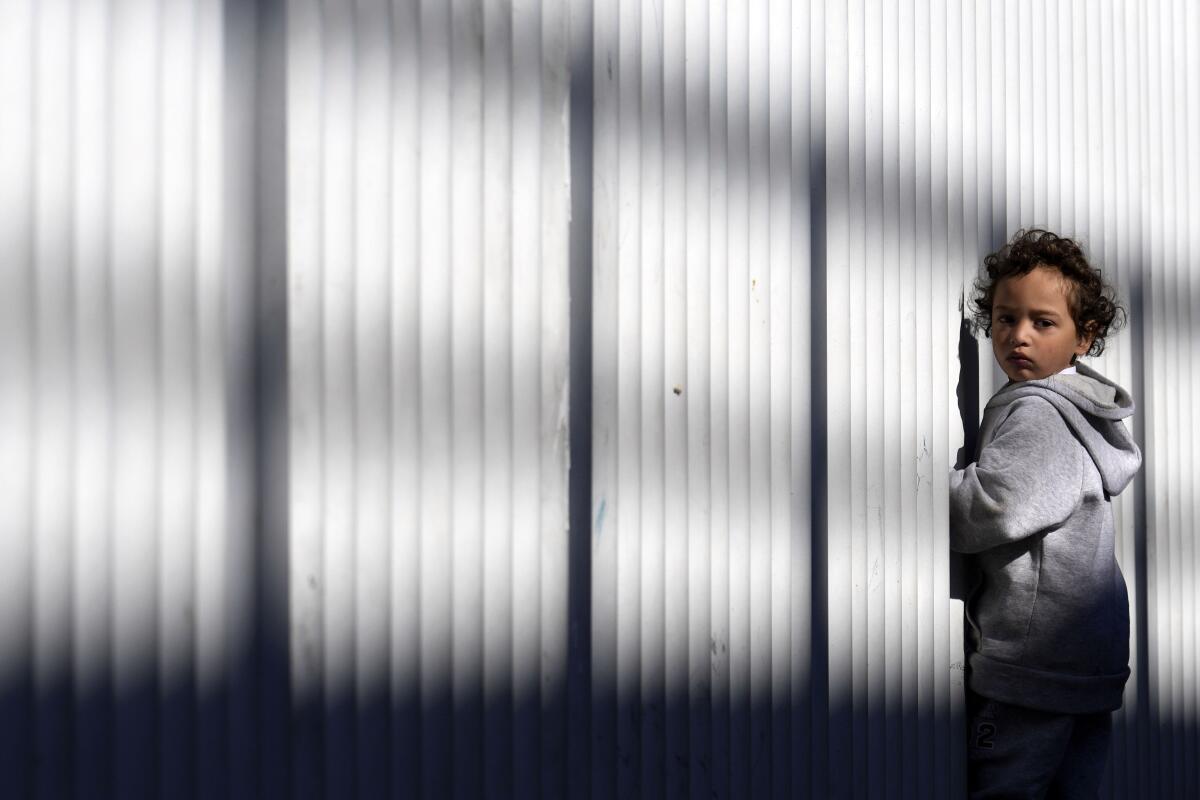
- Share via
TIJUANA — Albert Rivera knows well how dangerous Mexico can be: He sometimes wears a bulletproof vest around the compound of bright yellow buildings that he built into one of the nation’s largest migrant shelters.
His phone stores more evidence in the form of stomach-churning videos that gangs sent migrants to warn of consequences for disobeying demands. The images include severed limbs being thrown onto a pile, a severed head getting tossed into a barrel of steaming liquid and a woman being decapitated.
But across town from the Agape Mision Mundial shelter, many migrants are grateful for a chance to settle here. That’s where Mexico’s asylum office greets foreigners who consider the border city of Tijuana a relatively safe place to live with an abundance of jobs.
The jarring contrast speaks to Mexico’s conflicted status. It is a country where violence and inequality chase many people to seek a better life in the United States. For others it offers a measure of peace and prosperity beyond what’s available in their homelands.
A safe, robust asylum system in Mexico eases pressure on the United States, which is looking more to other governments to manage migration. A U.S. Supreme Court ruling issued Tuesday kept pandemic-era limits on asylum in place for now.
Mexico was the world’s third-most popular destination for asylum seekers in 2021 after the United States and Germany, according to the United Nations. It is on pace to end the year just below an all-time high of 131,400 asylum claims in 2021, led by Hondurans, Cubans and Haitians.
Confusion and anxiety has been building in Ciudad Juarez and El Paso over what appears to be the pending demise of Title 42.
Juan Pablo Sanchez, 24, followed others who left Colombia in the last two years after struggling financially as an organizer of cultural events.
For him, Tijuana is a better option than the United States. He pays $250 a month in rent, far less than a friend who pays $1,800 for a similar place in Illinois. Pay is lower in Mexico, but jobs are plentiful, including at export-driven manufacturing plants.
Lower expenses means more money to send his wife and stepson in Pereira, a city in a coffee-growing region of the Andean foothills.
“The fruit [of my work] is seen in Colombia,” he said after riding a motorcycle he uses for a messenger job to the Tijuana asylum office. “Making a living in the United States is precarious.”
Mexico granted 61% of asylum requests from January through November, including at least 90% approvals for Hondurans and Venezuelans. Cubans and Haitians are far less successful.
The justices grant an appeal from GOP-led states that sought to keep Title 42 in place to prevent a new surge of migrants.
The U.S. grant rate was 46% in the fiscal year that ended Sept. 30. That figure is below Mexico’s rate but up from 27% two years ago, when the administration of former U.S. President Trump sharply limited relief for victims of gang and domestic violence, according to data from Syracuse University’s Transactional Records Access Clearinghouse.
Mexico abides by the Cartagena Declaration, which promises a haven to anyone threatened by “generalized violence, foreign aggression, internal conflicts, massive violation of human rights or other circumstances which have seriously disturbed public order.” The U.S. observes a narrower definition that requires a person to have been individually targeted for limited reasons, as spelled out in the U.N. Refugee Convention.
Mexico’s relatively generous criteria carry little weight in Rivera’s shelter, where roughly 500 guests seldom venture far beyond a neighborhood store. The Puerto Rican pastor grew up in Los Angeles and ran a home in Tijuana for recovering drug addicts before converting it to a migrant shelter in 2018. He says gunmen once burst inside looking for a woman who was hiding elsewhere.
Maria Rosario Blanco, 41, came with her sister and 8-year-old grandnephew, who was riding on the back of his father’s motorcycle in the Honduran capital, Tegucigalpa, in 2019 when an assailant fatally shot his father. The family finally left when a flood destroyed their home.
Blanco said gangs regularly threatened to kill or kidnap her even after she moved to another part of Honduras and to Palenque in southern Mexico, a town known for Maya ruins. She says she won’t feel safe until reaching the United States, where she hopes to settle in a Chicago suburb with a man she met through church.
For decades, officials have recognized Mexico’s high femicide rate and violence against women in general as a major problem.
“The gangs are everywhere,” she said, describing fears about Mexico. She said Hondurans are easy targets for assailants because of how they speak.
A Mexican woman who spoke on condition of anonymity for safety reasons said her troubles began when a brother joined a gang under threats to his family, but they killed him anyway. Then her 15-year-old son joined the gang to save his family. They don’t know where he is but received a photo of him with an assault rifle.
“The new rule is that people are obligated to join” the gang, she said. “If you refuse, it doesn’t matter. They kill you either way.”
The gang burned their house in a small village in Michoacan state, stole their farmland and threatened to kill the entire family if her husband and 12-year-old son didn’t join. They hope for an exemption to the U.S. asylum ban, which was kept alive at least a few months under Tuesday’s 5-4 Supreme Court ruling. Justices will hear arguments in February on so-called Title 42 authority, which will remain in force until they decide the case.
Under Title 42, migrants have been denied a chance at asylum 2.5 million times since March 2020 on grounds of preventing spread of COVID-19. Some exceptions are made for those deemed particularly vulnerable in Mexico.
Despite spiraling violence and a stagnating economy, Mexican President Andrés Manuel López Obrador has maintained sky-high approval ratings because he speaks to the working poor.
Amid anticipation that Title 42 was about to end, some advocates expected the Biden administration to revive a Trump policy — temporarily blocked in court — that denied asylum to non-Mexicans if they did not first apply in a country they traveled through, like Mexico.
Maureen Meyer, the Washington Office for Latin America’s vice president for programs, said Mexico might agree to lesser steps, such as more enforcement within its own borders or admitting some migrants who are ordered to leave the United States. Under Title 42, Mexico has taken back migrants from Honduras, Guatemala, El Salvador and, more recently, Venezuela, as well people from Mexico.
While some asylum seekers in Mexico get permits to travel within the country, they generally must stay in the state where they apply, Meyer said. Seven of every 10 apply in Chiapas state, bordering Guatemala, where jobs are scarce.
Jobs are abundant in Tijuana, but the city’s Mexican Commission for Refugee Aid office is relatively small. One Venezuelan who visited the office after being expelled from the United States under Title 42 said Mexico was “10 times better” than home.
Migrants arrive fatigued, said Efrén González, director of the commission’s Tijuana office. “They stop and plan their next steps, and I think Tijuana is a good place to do that.”
More to Read
Sign up for Essential California
The most important California stories and recommendations in your inbox every morning.
You may occasionally receive promotional content from the Los Angeles Times.
